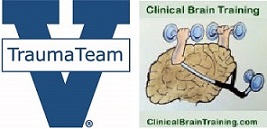Since I have gotten on this kick of reading as much as I can about fireground command and listening to people like Chiefs Kastros, Hadfield and Gasaway, I am continually amazed that we in medicine did not see the similarities between fireground and clinical service command and try to learn from what the fire chiefs have developed. Here is just an example.
Anyone who has practiced in academic medicine has experienced the horrible feeling you get when after you get out of the OR, there are 2-3 patients on the service who have taken a nose dive in the past 6 hours and now require active life saving. After you stop yourself from pummeling the intern or ICU resident for not calling earlier, you realize that earlier intervention, or even some communication would have saved a lot of problems and heartache.
But in our clinical system, there is no firm communication system other than “call me if you need help”. We have virtually no ability to maintain situational awareness of the status of patients on our services during the day and night and are in an almost completely reactive mode.
Chief Kastros fantastic article “Managing Fireground Command: Calming the Chaos” in Fire Engineering could, with the substitution of a few words, describe many of the problems we have in hte hospital. One to focus on is the relationship between strategic-tactical-and task. Chief residents and attendings function in the strategic role. One way he describes it is at the fire ground, the strategic vision is beyond 50 feet, the tactical 6-50 feet and the task level less than 6 feet. For the hospital, the strategic vision is of an entire service, encompassing ICU, floor, yet to be admitted ED patients, and the OR for surgical services. The task level is easy, its the person touching the patients all day, writing orders, doing procedures, etc. and that is the front line level MD or RN. But where is the tactical level in hospitals??
At the fire ground, the tactical level is embodied in the division/group supervisor, and in the fire house by the company officer (mostly captains, and some services still have lieutenants). This person supervises task performance, or small groups of tasks in a defined area (at the fire ground – roof division who may supervise several companies carrying out several tasks on the roof, in the hospital – a lead clinician for the ICU who would supervise multiple tasks in a single unit). Another distinction is that the company officer in fire is directly responsible for most of the training firefighters get once they are assigned to companies. We do not have a similar structure in medicine, and I believe we suffer for it. If you believe it is the chief or senior resident or attending then I have not clearly explained the role of the company officer. These people essentially supervise their charges “at the elbow” for all procedures. It is that direct over the shoulder supervision of daily activities in the hospital, along with thecoordination that person would provide of the happenings in the clinical units that would bring improved situational awareness to hospital operations.
In medicine, with the overwhelming number of hour and work restrictions that are implemented or are in progress, I feel the only person who could fill that role would be an NP or PA. NPs and PAs are some of the best teachers I have encountered, and they perform that role daily. But where we can improve, is in providing “lead” NP/PAs are true tactical supervision role in monitoring and moving care forward in clinical units and services. More to follow…



 Subscribe in iTunes
Subscribe in iTunes